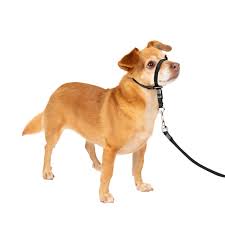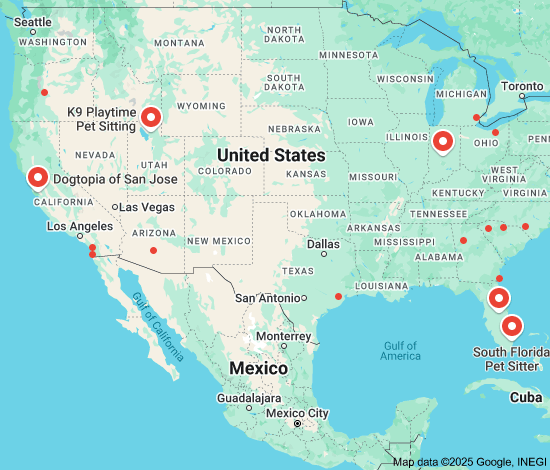The Importance of Dog Collars
Dog collars are more than just a fashion accessory for your furry friend; they serve important practical purposes as well. Here are some reasons why dog collars are essential:
Identification and Safety
A collar with an ID tag is crucial in case your dog gets lost. The tag should include your contact information so that if someone finds your pet, they can easily reach out to you. Additionally, reflective or light-up collars can improve visibility during nighttime walks, enhancing your dog’s safety.
Training and Control
Collars are often used in training to teach dogs proper behavior. They provide a means of control during walks and help communicate commands effectively. For dogs that tend to pull on the leash, a properly fitted collar can aid in teaching them to walk politely on a leash.
Medical Needs
In some cases, dogs may need to wear special collars for medical reasons. For example, dogs recovering from surgery may wear an Elizabethan collar (also known as a cone) to prevent them from licking or chewing their wounds. These collars play a vital role in aiding the healing process.
Personalized Style
Besides their functional aspects, dog collars also allow owners to showcase their pet’s personality and style. With a wide range of designs, materials, and colors available, you can choose a collar that reflects your dog’s unique character while keeping them safe and secure.
In conclusion, dog collars are indispensable accessories that offer both practical benefits and opportunities for personalization. Whether for identification, training, safety, or style, investing in a high-quality collar is essential for every dog owner.
9 Benefits of Dog Collars: Safety, Training, and Style
- Provides a means of identification if your dog gets lost.
- Enhances safety during nighttime walks with reflective or light-up options.
- Aids in training by providing control and communication.
- Helps prevent dogs from pulling on the leash during walks.
- Can be used to attach ID tags, vaccination tags, and licenses for compliance.
- Allows for medical needs such as recovery collars after surgery.
- Offers a way to express your dog’s personality through various designs and colors.
- Assists in keeping your dog safe by preventing them from wandering off unsupervised.
- Promotes responsible pet ownership by ensuring proper restraint in public spaces.
Potential Drawbacks of Using Dog Collars: Comfort, Safety, and Health Concerns
- Some dogs may find collars uncomfortable, especially if not fitted properly.
- Collars can get caught on objects or other animals during outdoor activities, posing a risk of injury.
- Certain types of collars, such as choke or prong collars, if used incorrectly, can cause physical harm and discomfort to the dog.
Provides a means of identification if your dog gets lost.
One significant benefit of dog collars is their ability to provide a means of identification if your beloved pet happens to get lost. By having an ID tag attached to the collar with your contact information, you increase the chances of a safe reunion in case your dog wanders off. This simple yet crucial feature offers peace of mind to dog owners, knowing that their furry companions can be easily identified and returned home swiftly if they stray.
Enhances safety during nighttime walks with reflective or light-up options.
Dog collars play a crucial role in enhancing safety during nighttime walks by offering reflective or light-up options. These features improve visibility in low-light conditions, making it easier for drivers and pedestrians to spot your dog. By using a collar with reflective materials or built-in lights, you significantly reduce the risk of accidents or getting separated from your furry companion during evening strolls, ensuring a safer and more enjoyable walking experience for both you and your dog.
Aids in training by providing control and communication.
Dog collars play a crucial role in training by offering control and facilitating communication between owners and their furry companions. With the right collar, pet parents can effectively guide their dogs during walks, obedience training, and behavioral corrections. The collar serves as a tool for issuing commands and redirecting unwanted behaviors, helping to establish boundaries and reinforce positive habits. By providing a means of control and clear communication, dog collars contribute significantly to the training process, fostering a harmonious relationship between dogs and their owners.
Helps prevent dogs from pulling on the leash during walks.
One significant benefit of using dog collars is their ability to help prevent dogs from pulling on the leash during walks. Properly fitted collars provide a means of control and communication, allowing owners to guide their dogs and teach them leash manners effectively. By using collars designed for leash training, dog owners can encourage their pets to walk politely without pulling, making the walking experience more enjoyable for both the dog and the owner.
Can be used to attach ID tags, vaccination tags, and licenses for compliance.
Dog collars serve a crucial purpose in enabling pet owners to attach essential identification tags, vaccination tags, and licenses for compliance. By securely affixing these tags to the collar, owners can ensure that their furry companions can be easily identified if they ever get lost. Additionally, having vaccination and license information readily accessible on the collar promotes responsible pet ownership and compliance with local regulations. This feature of dog collars not only enhances safety but also streamlines the process of reuniting lost dogs with their owners promptly.
Allows for medical needs such as recovery collars after surgery.
Dog collars play a crucial role in addressing medical needs, particularly in the case of recovery collars needed after surgery. These specialized collars, such as Elizabethan collars, serve as protective barriers to prevent dogs from licking or chewing their surgical wounds. By providing a safe and effective way to support the healing process, these recovery collars help ensure that dogs recover successfully and without complications post-surgery.
Offers a way to express your dog’s personality through various designs and colors.
Dog collars provide a wonderful opportunity for pet owners to showcase their dog’s unique personality through a wide array of designs and colors. Whether you prefer a vibrant and playful pattern or a sleek and sophisticated style, there is a collar to suit every canine companion. By selecting a collar that matches your dog’s character, you not only add flair to their appearance but also express their individuality to the world. This aspect of personalization allows for a fun and creative way to bond with your furry friend while keeping them safe and stylish during daily adventures.
Assists in keeping your dog safe by preventing them from wandering off unsupervised.
Dog collars play a crucial role in keeping your furry companion safe by preventing them from wandering off unsupervised. By securely attaching a leash to the collar, you can maintain control over your dog during walks or outdoor activities, reducing the risk of them getting lost or running into dangerous situations. This added layer of security ensures that your dog stays within sight and under your supervision, promoting their well-being and giving you peace of mind.
Promotes responsible pet ownership by ensuring proper restraint in public spaces.
Dog collars play a crucial role in promoting responsible pet ownership by ensuring proper restraint in public spaces. By securely attaching a leash to a collar, dog owners can maintain control over their pets while out and about, preventing them from wandering off or approaching others without permission. This not only keeps the dog safe but also fosters a respectful and considerate environment for other people and animals sharing the same space. Ultimately, using a collar for restraint exemplifies a commitment to the well-being of both the dog and the community, highlighting the importance of responsible pet ownership.
Some dogs may find collars uncomfortable, especially if not fitted properly.
Some dogs may find collars uncomfortable, especially if not fitted properly. Ill-fitting collars can cause irritation, chafing, and even lead to skin issues for sensitive dogs. Dogs that are not accustomed to wearing collars may exhibit signs of distress or discomfort when forced to wear one. It is essential for dog owners to ensure that collars are appropriately sized and adjusted to prevent any discomfort or negative reactions from their furry companions. Regularly checking the fit of the collar and monitoring your dog’s comfort level can help address this issue and ensure a positive experience for both the dog and owner.
Collars can get caught on objects or other animals during outdoor activities, posing a risk of injury.
One significant drawback of using dog collars is the potential risk of them getting caught on objects or other animals during outdoor activities. This poses a serious safety concern as it can lead to injuries for the dog. Whether it’s a collar getting snagged on a branch during a hike or entangled with another animal during play, such incidents can result in discomfort, strangulation, or even more severe consequences. Dog owners should be cautious and consider alternative options like breakaway collars or harnesses to mitigate this risk and ensure their pet’s safety during outdoor adventures.
Certain types of collars, such as choke or prong collars, if used incorrectly, can cause physical harm and discomfort to the dog.
Certain types of dog collars, like choke or prong collars, have raised concerns due to the potential harm they can inflict on dogs when used improperly. These collars, if not fitted or used correctly, can cause physical discomfort and even injury to the dog’s neck and throat. The design of such collars relies on applying pressure or correction through discomfort, which can lead to negative behavioral consequences and undermine the trust between the dog and its owner. It is crucial for dog owners to understand the risks associated with certain collar types and prioritize positive reinforcement training methods to ensure their pet’s well-being and safety.




